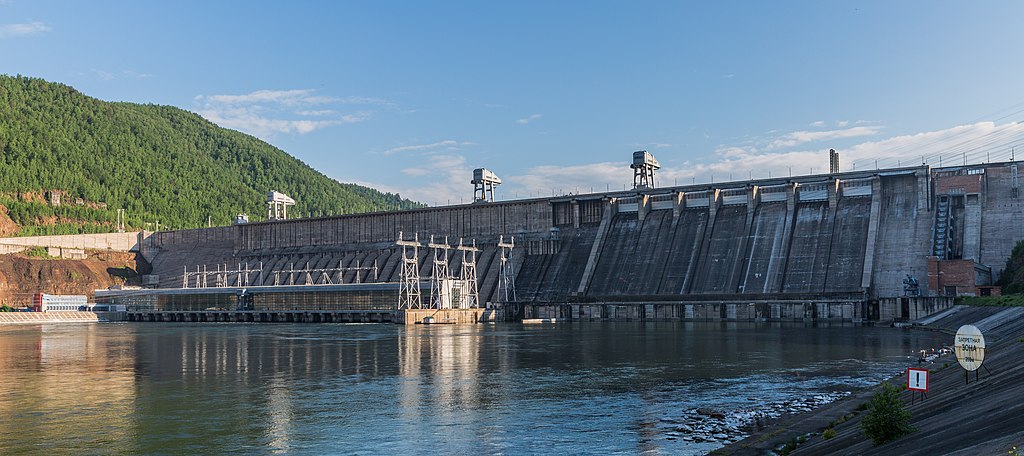Red and green: Research explores the Soviet Union’s environmental legacy

Siberia swings between extremes: bitter winters and scorching summers. Vast landscapes virtually untouched by human hands, and others profoundly changed by the extraction of natural resources. Natural beauty that inspires poetry, and some of the worst air pollution in the world.
The Soviet Union focused its attention on the development of Siberia starting in the 1950s in an effort to bolster a lagging economy. Mariia Koskina, a doctoral candidate in history at Binghamton University, researches that tension between economic development and nature preservation, and how the Soviet legacy continues to shape the Eurasian and global environment to this day.
Koskina recently received a Stanford U.S.-Russia Forum (SURF) fellowship, joining a cohort of 51 scholars from 11 countries exploring issues of mutual interest to the United States and Russia. Due to the pandemic, in-person conferences will be replaced by virtual roundtables and seminars with leaders across business, government and academia from both countries.
She’s part of SURF’s Climate and Environment working group, which is focusing on wildfires in Siberia and Alaska.
“It is a fantastic opportunity for me to build connections in and outside of my field, to do policy-relevant research and, generally, to expand my knowledge of U.S.–Russian relations and cooperation in various areas,” she said.
A native of Tula in Russia, Koskina holds a master’s degree in linguistics from the Higher School of Economics in Nizhny Novgorod. She came to Binghamton in 2015 on a Fulbright scholarship, earned a master’s degree in American history, and interned at the United Nations’ Department of Public Information as a multimedia archivist and at the Woodrow Wilson International Center for Scholars as a Russian language specialist working on the International Cold War History Project.
Now in the fourth year of her PhD program, her doctoral research investigates Soviet environmental policies and popular attitudes toward nature practices in Siberia’s Yenisei basin from the 1950s through the 1970s.
At Binghamton, Koskina found faculty members who inspired her as teachers, scholars and mentors, helped smooth her transition to a new discipline and a new country, and sparked a contagious curiosity. They include her advisor, Associate Professor Heather DeHaan, as well as Associate Professor Stephen Ortiz, Associate Professor Elisa Camiscioli and Associate Professor Wendy Wall.
“Mariia is pursuing a theoretically important and yet also playful project. In it, a Siberian landscape that was, in Soviet understanding, to be a passive recipient of human care and development becomes the agent of a new Soviet environmental subjectivity,” DeHaan said. “In other words, the expectations of Soviet administrators — and of us as historians — get ‘flipped on their head,’ and the mighty waters of the Yenisei River suddenly assume an important role as agents of historical change. There are delightful and eye-opening ironies in the material she has uncovered.”
Industrial development
Siberia is a huge landmass — a third larger than the United States — with natural resources ranging from water and timber to gold, diamonds, gas and more. A new technology in the post-war period, hydroelectric dams sprang up on Siberian rivers, sparking the growth of cities, factories and the local population.
Koskina specifically looks at the city of Krasnoyarsk and its dam on the Yenisei River, one of the most powerful hydroelectric generators of its time. The dam enabled a local industrial revolution, including a massive aluminum factory.
It also changed the landscape beyond recognition. The river no longer freezes during the bitter Siberian winter, and an icy fog now shrouds the city. Sometimes it’s a choking, chemical-laden smog, described by locals as “black sky.”
Industrial development, however, isn’t the whole story; the Soviet Union also had its own home-grown environmentalism. Nature reserves, known as zapovedniki, emerged in pre-Soviet times; they were modeled somewhat after the American national park system, but with a focus on scientific research. In 1951, the Soviet Union had 128 such reserves, but the number dipped as more land was harnessed for economic use; some of these reserves were recovered in the 1960s.
One of these nature reserves was established in Krasnoyarsk between the dam and the city. The dam site also included a “green zone” that prohibited hunting and fishing.
While the Soviet Union had no private or non-governmental environmental organizations, it did have the All-Russian Society for Nature Protection, founded in 1924. Green and blue patrols at schools organized cleanups of forests and local water bodies, and city planning efforts attempted to preserve native vegetation.
In the early 1970s, the USSR and the USA squared off in a “green race,” trying to demonstrate whether socialism or capitalism better protected the environment. The USSR showcased its ideas on environmental protection during the 1974 World’s Fair in Spokane, and in 1978 published a comprehensive list of endangered animal and plant species.
In 1972, U.S. President Richard Nixon and Soviet President Leonid Brezhnev signed an agreement calling for environmental cooperation. Russia and the United States don’t often take bilateral action to address the climate or the environment today, underscored by President Donald Trump’s withdrawal from the Paris climate accord, Koskina reflected.
“The history says that our leaders can and the state of our environment says that they should work together better; after all, the U.S. and Russia are some of the world’s major polluters,” she said.
Preserving nature
While the Soviet Union’s “conquest of nature” storyline is common in scholarship, Koskina’s work also considers the everyday encounters of Soviet newcomers with Siberia’s landscape. They built factories, but they also wrote poems about the region’s beauty, hiked the nature reserve, tended city greenery and prosecuted poachers.
In 2019, she received the Association for Slavic, East European and Eurasian Studies Dissertation Research Grant, which funded the first round of her fieldwork. In addition to Moscow, she paid a visit to Divnogorsk, the closest city to the Krasnoyarsk dam, and saw firsthand why its name means “marvelous mountains.”
“A visit to the Stolby nature reserve was the highlight; Siberian nature and landscapes are stunning and very different from central Russia,” she said.
But she also experienced the downsides of Siberian development: bad air and frigid temperatures caused a painful bout with bronchitis.
She knows that tension between the economy and nature from her own childhood in Tula. Her father worked at a metallurgical plant for more than 50 years, but the industry that provided her family with financial security also created the soot they breathed, and which coated the fruit and vegetables they grew. But the love for the land rooted deep in Koskina; when she moved to the United States, she planted blackcurrants to give her a literal taste of home.
Long-term, she hopes to continue her career in Western academia writing about Russia and the Soviet Union in English.
“America for Russia, just like Russia for America, has been a real mystery and a myth; both countries have gotten used to defining themselves through what they believe to be their differences,” Koskina said. “I think that we can get closer to the truth regarding both nations while looking at their commonalities, of which there are more than you would think.”

